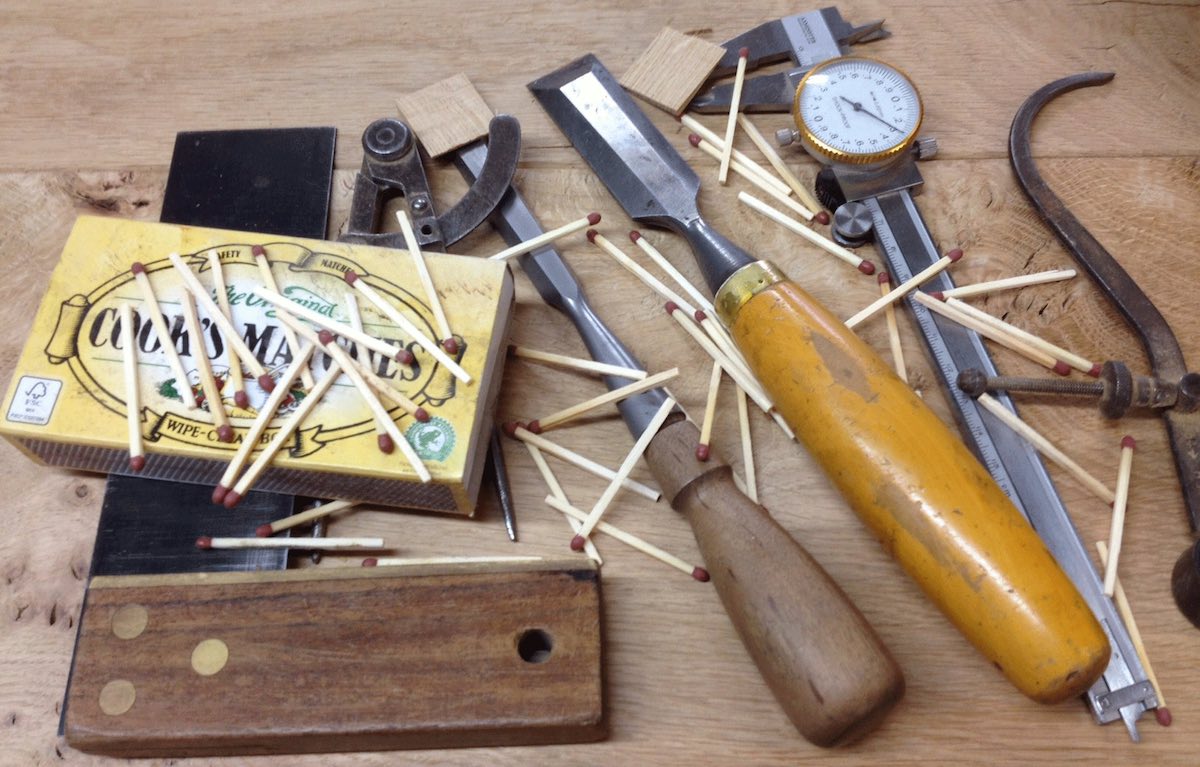A month and a half on from the fun of Oxford Artweeks, it has been interesting to reflect on the event and how visitors have engaged with our Empire of Sheds. In this light, may I offer the following dubious observations…

Artweeks is apparently better on a full stomach. Visitations to our lovely former prisoner of war camp were somewhat sporadic over the two weeks, but I noticed a significant increase in numbers around mid-afternoon, on both Saturdays and Sundays. Picture the scene: Only the bones are left, the bottles are drained to the dregs, the coffee’s cold and the cheese is kicking off its shoes and snuggling down into the arteries, what’s next? Obviously, knock back a couple of After Eight Mints, then head out for a roam around Bates and Lambourne.
Showing people round the workshop is a really good way of reminding oneself what an unusual entity it is. The making of things is largely hidden from view in consumer society, both in the process of manufacture and in the construction of the finished article. So many products are, in terms of the story of their production, illegible. Surfaces are seamless. Where there are fixings, they are frequently of a type that require non-standard tools; a barrier device developed from the same mindset as the warning notice usually found on the backs of electrical goods – “No user-serviceable parts inside”. It is good to be able to lift the cover off and show the cogs and wheels of the work in progress for a change.
Visitors’ interest is as much, if not more, in the workshops, as in the completed pieces in the showroom. I suppose that there is something familiar in finished articles, whereas things in the making, sawn boards, unassembled joints, batched components, sawdust and splinters are all normally tucked away behind retail’s glossy reflective veil.
For the furniture maker, the relationship with the finished piece is a fleeting one. At the moment of completion, it’s on to the next project, back to the barn and roughing out the next lot of plank. The function of a piece of furniture depends upon perspective. If one has built a dining table, then from the client’s point of view its function is to hold their plates, glasses and cutlery off the floor, as well as attractively filling that empty space in the middle of the dining room. From the maker’s point of view its function is to create the work to create the remuneration to allow the maker to make again.
Perhaps the making of a piece, the process of it, is the soul of the object. The thing itself, the body, exists as a result of the making, and is subsidiary to it. One could set a match to the dining table (as actually happened to the tables we made for Indiana Jones and the Last Crusade!) and the body would be gone, but the fact of its having been made remains. Not wishing to encourage random acts of arson, I should point out that for me it is the durability of the finished piece that is so satisfying, the making of something that, with a bit of care and luck will long outlast the maker.
For the client too, there is a value in the process of making. It is this connection that in part gives the object its worth, though what will endure for them is the object rather than the making of it. The object becomes a symbol of its making. Among a number of dreamed-of projects, I hope that one day we will be commissioned to make a piece (the grander the better for the purposes of the act) that will, upon completion be utterly destroyed by fire. The ashes will then be presented in a small urn as a representation of the skill and craft that has gone into it, unencumbered by the reality of the object itself, the disembodied soul of a piece of furniture.
Josh H-S 7 Jul 2015
